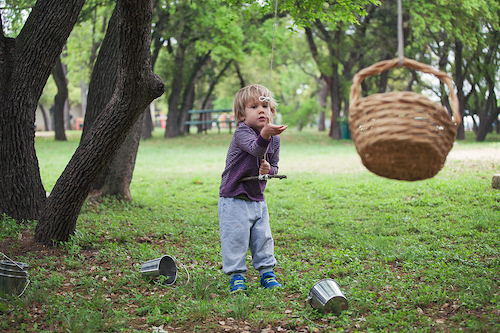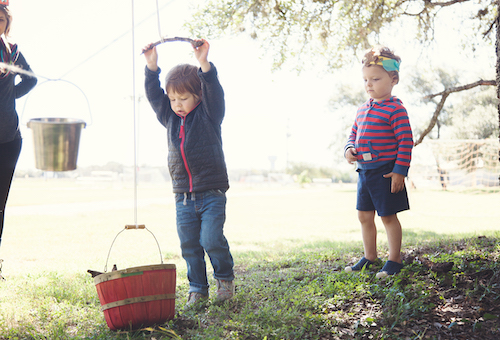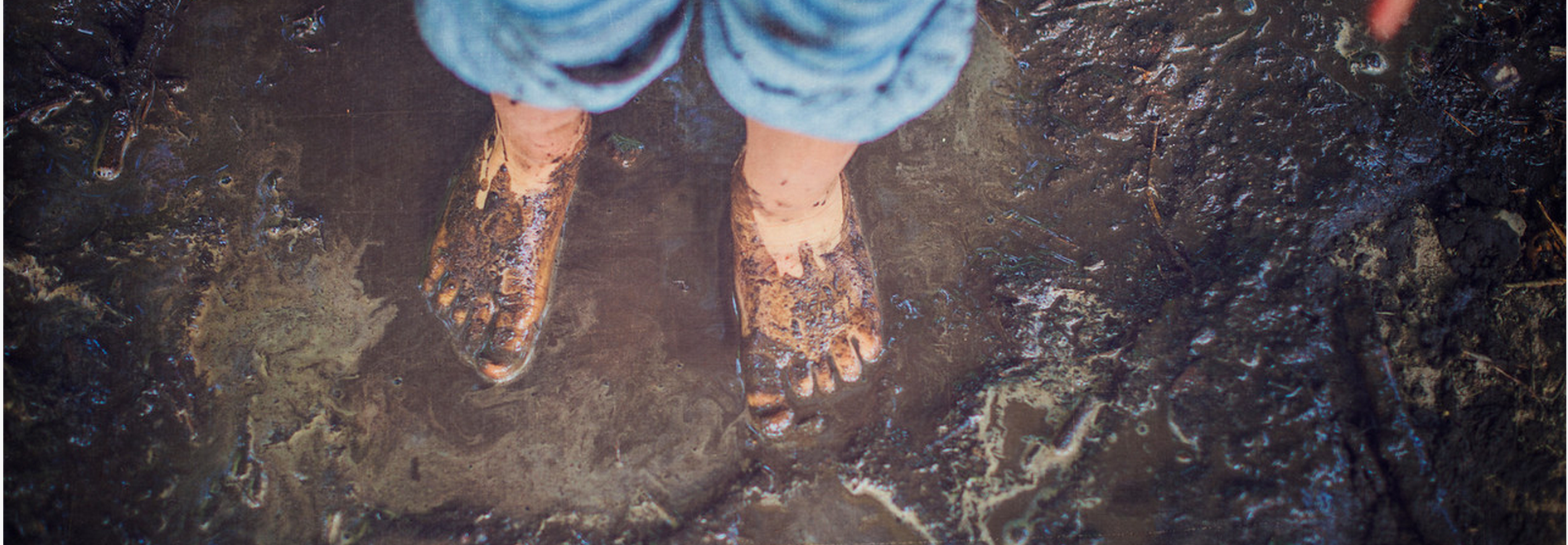Pulley Play
-
Age: 0 to 8+
-
Time: Under 1 hour
-
Materials: basket; rope; various "passengers"
- Skills: Focus & Self Control, Problem Solving, Gross Motor, Self Reliance, Science, Sensory
If you can find a bag, basket or bucket (really, any sturdy container with handles), some rope and a tree with a sideways limb, you can create a simple pulley and inspire hours, even days of muscle and brain boosting play.
There are endless ways to experiment with pulleys, making them super STEM and problem solving tools. Invite others to play as well, and your child will get the chance to work together with other kids to experiment and share the pulley—marvelous opportunities to develop collaboration and problem solving skills too.
This activity is featured in our January Activity Calendar. Need your free copy? Visit tinkergarten.com/calendar today!
There are endless ways to experiment with pulleys, making them super STEM and problem solving tools. Invite others to play as well, and your child will get the chance to work together with other kids to experiment and share the pulley—marvelous opportunities to develop collaboration and problem solving skills too.
This activity is featured in our January Activity Calendar. Need your free copy? Visit tinkergarten.com/calendar today!
The Guide
Gather the three things you need.
- A bag, basket or bucket (i.e. sturdy container with handles)
- Around 30 feet of rope (or longer if your tree is tall)
- A tree with a sideways limb
Set up a simple pulley.
Tie one end of a rope to the handle of a basket. Tie the other end of the rope to a rock, stick or weighty and toss-able object. Toss the end with the rock over a tree branch and, voila, you have a pulley.
Raise and lower the basket a bit.
Model once if needed, then let kids have fun with raising and lowering the basket. Wonder what happens if you pull fast? Pull slow? Let go?
Agree on some rules.
Once kids see what this thing can do, set up some rules together for how to play with pulleys and keep everyone safe. We love to count down from 3 before we let go, for example.
Add weight.
Start to add different objects of different weights. We like to add a bit more each round, wondering, "Can we really lift this?!" Young children really respond to physical challenge and just love to amaze us that they can do something we appear to think is impossible.
Add "passengers."
Another option is to add special passengers such as a favorite toy, baby doll or stuffed animal. Wonder together about what kind of ride the passenger in question would like or how he or she might feel after each ride. Try to give different types and speeds of ride. This simple twist offers a powerful chance to build empathy and self control.
Experiment a bit.
Without interrupting focused play (such an easy thing to do as an excited adult), offer "what if?" questions to surface possible experiments. "What if we used this rope vs that rope? Swap a larger basket? Use a higher branch? Construct a simple crank?"
Revisit pulley play.
Although our adult brains seek novelty, this is a perfect one to recycle. The child mind benefits tremendously from repetition and the chance to build on prior experience.
Why is this activity great for kids?
Pulley play supports development on many levels. Kids activate their proprioceptive system and derive both satisfaction and self reliance when doing heavy work. The chance to experiment and play with this simple machine is a marvelous way to build STEM (science, technology, engineering and math) and problem solving skills in a most age appropriate way. Consider the needs of your "passengers" and kids develop empathy and a touch of focus and self control to boot. If pulley play happens in a social group, kids can also develop key collaboration skills.






